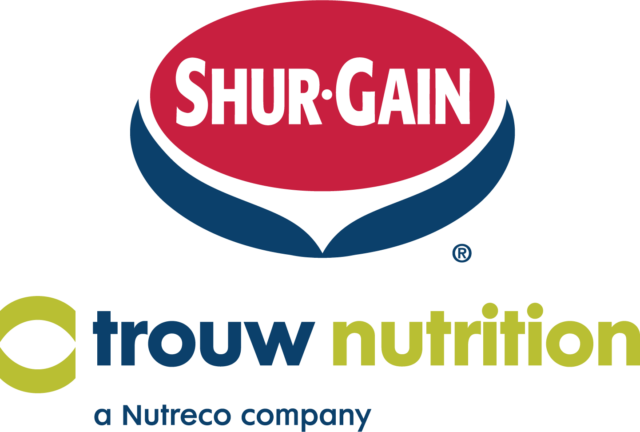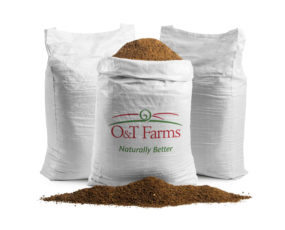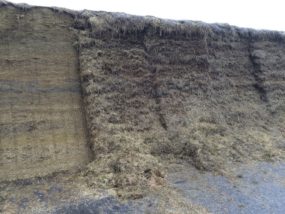‘Impact of training dairy farm personnel on milking routine compliance, udder health and milk quality’
Journal of Dairy Science Vol. 108 No. 2, 2025
This article, from researchers from Michigan University and DeLaval, aimed to assess the impact of a training session on dairy farmworkers’ understanding of the milking routine, behavioural changes during milking and subsequent effects on milk quality and udder health. For that purpose, 112 farmworkers from 16 commercial dairy farms in Michigan and Ohio participated in the project. The training session was delivered using an active learning approach prioritizing group discussions and focused on the pathogenesis, identification and risk factors for mastitis, as well as the rationale and importance of each step in the milking routine. Pre- and post-training evaluations were conducted to measure changes in knowledge, parlour evaluations were performed to determine behavioural changes, and data from clinical mastitis cases and bulk tank SCC were used to estimate udder health and milk quality. Participants were mostly milking technicians (61.1%) with 70% of them having less than one year of experience and a median tenure in their jobs of nine months.
The authors provide some background explaining that clinical and subclinical mastitis are among the costliest diseases in dairy farming given their negative effects on milk quality and milk yield, ultimately affecting the profitability of dairy operations. They say that, among the management practices used on dairy farms, there are very few with a more profound effect on reducing mastitis and improving food safety and milk quality than consistent implementation of a standardized milking routine. A lack of understanding of the reasons and importance of the milking process is an important limitation to consistent implementation of an effective milking routine. Inconsistency, the authors continue, is further exacerbated by the high turnover of employees, hiring employees who lack previous dairy experience and limited employee access to training and educational programs.
Research underscores the positive impact of training programs on various aspects of dairy farm operations, which ultimately results in a positive return on equity. Research also highlights the importance of training in fostering teamwork, communication and satisfaction, ultimately leading to improved overall farm management and decision-making. Therefore, the objective of this study was to measure the impact of a training session on acquired understanding of the milking routine, behavioural changes during milking and milk quality and udder health parameters in commercial dairy farms.
Farms were enrolled based on if they had a conventional farm, workers had not received training on milk quality or milking protocols in the last two months, management personnel and greater than 80% of milking technicians agreed to participate in the training session, and they were willing to share computerized herd management records with the research team. Farms that met these criteria were enrolled and visited three times between April and September 2023.
The study concluded that training of farmworkers had a positive impact on their knowledge and practices related to milking routines, generating satisfaction and a willingness to adhere to milking protocols. For example, knowledge of the milking routine increased from 49.3% to 67.6% of correct answers after training. Based on parlour evaluations, the pre-milking disinfectant contact time increased by nine seconds per cow. The percentage of milkings with inadequate preparation time decreased from 69% (before training) to 48% (after training). The proportion of insufficient teat coverage during post-milking disinfection decreased from 9.8% (77 out of 782) before training to 5.9% (34 out of 572) after training. Therefore, given the key role that farmworkers play on milk quality, regular training and assessment should be part of their development in commercial dairy farms.
‘Invited review: Udder cleft dermatitis in dairy cows’
Journal of Dairy Science Vol. 108 No. 1, 2025
This article, from researchers from Ghent University, Belgium, explains udder cleft dermatitis, its clinical aspects and prevalence, risk factors and treatment options, prevention and recovery outcomes. The authors indicate that udder cleft dermatitis (UCD) is a common dermatological condition of the udder skin in dairy cows, considered to be a multifactorial disease but with limited information about it in literature. It is an inflammatory skin condition with a foul odour, commonly occurring between the udder halves and at the front udder attachment. In early literature, the terminology for this type of udder skin lesion was ill-defined, resulting in the interchangeable use of various terms to describe these lesions such as ulcerative mammary dermatitis, intertrigo, udder dermatitis, foul udder, necrotic dermatitis, udder rot and udder scald. However, nowadays “udder cleft dermatitis” is mostly used. The authors say that, in cattle, we need to distinguish UCD from udder-thigh dermatitis, which is situated on the skin between the posterior part of the udder and the thigh and is predominantly seen in heifers shortly before calving.
The lesions can be categorized according to the macroscopical aspect of the lesion. In mild lesions, the skin remains intact with minor changes such as erythema, papules and crusts (less than 5 square centimetres), whereas large ulcerative exudative wounds with necrosis and hemorrhages are characteristic for severe UCD cases. The authors say that a precise cause of UCD has not yet been elucidated.
A multifactorial etiology is highly likely. Nonetheless, several potential factors on cow, herd and environmental level associated with the presence and the development of UCD have been identified. The inflammation resulting from skin-on-skin friction commonly presents with secondary bacterial infections and falls under the broader term moisture-associated skin damage. Udder conformation, parity and lactation parameters stand out as the most important risk factors identified to date. A strong front udder attachment has been established as a protective factor.
Research has been trying to identify the causes of UCD with the use of omics analysis (this type of analysis studies a biological system with its unique microbe-host-environment interactions and involves genomics, transcriptomics, proteomics, epigenomics, etc.). The article proposes, based on the available literature about the risk factors involved and the recent studies about the reaction of the host and the change of the microbiome, including their mutual interaction, a pathogenesis that goes like this: Close to parturition, the udder is enlarged and eventually swollen by peripartal edema. The latter potentially causes the development of intertrigo, known as an inflammatory skin disorder that occurs due to skin-on-skin friction as a result of moisture becoming trapped due to poor air circulation. Initially, intertrigo presents as a mild mirror-image erythema, but progresses with increasing days in milk to a more severe inflammation. The local skin damage creates a predominantly anaerobic microenvironment, favouring pathogenic bacteria including Bacteroides spp., Treponema spp. and Strep. pyogenes associated with skin ulcerations in case of severe UCD over skin commensals such as Bifidobacterium spp. and Staphylococcus spp.
To date, there is no consensus about efficient curative treatment strategies for UCD. The healing of particularly severe lesions presenting with ulcerative wounds tends to be slow. A short duration and mild clinical course gave a higher recovery rate compared with longstanding severe lesions. Also, cows with a parity of 3 or greater had a lower chance of spontaneous recovery. Almost half of affected cows experienced a recurrence episode after recovery. Because of this, the authors indicate that early detection of UCD is imperative to prevent the progression to poorly healing severe lesions and secondary infections, which could have potentially catastrophic consequences such as septicemia and even death. Despite the lack of knowledge about effective treatments, it remains beneficial to maintain regular wound cleanliness and prevent wound infection, while simultaneously promoting skin healing. Routine screening in the milking parlour by the farmer or herd manager aids to detect UCD cases. During foot-trimming sessions, the udder skin health can be assessed as well, particularly in a hydraulic tipping crush. Early detection could possibly prevent the transition of mild to chronic severe lesions with an extended healing period.
The article concludes that udder cleft dermatitis is a widespread disease in dairy cattle, possibly leading to impaired animal welfare. Recent advances in omics have revealed critical insights into the molecular landscape of UCD. Metagenomic research points toward the presence of a grave dysbacteriosis of the eroded skin, with loss of beneficial bacteria, paving the way for facultative pathogens.
This column brings you information regarding some of the research being done around the world and published in the Journal of Dairy Science. The objective is to bring to light areas of research that may have an immediate practical application on a dairy farm, as well as research that, even though it may not have a practical impact now, could be interesting for its future potential application. The idea is to give a brief overview of select research studies but not go into detail on each topic. Those interested in further in-depth reading can use the citations to find each study.










